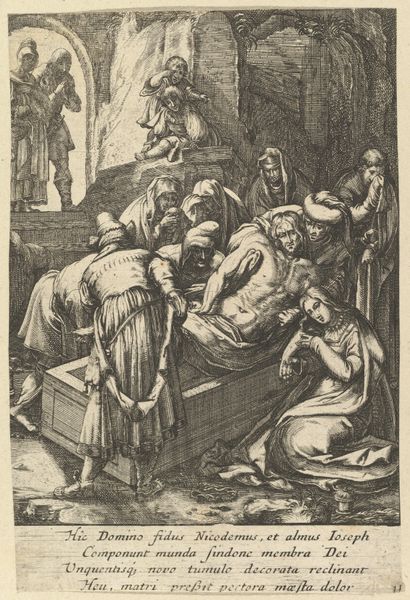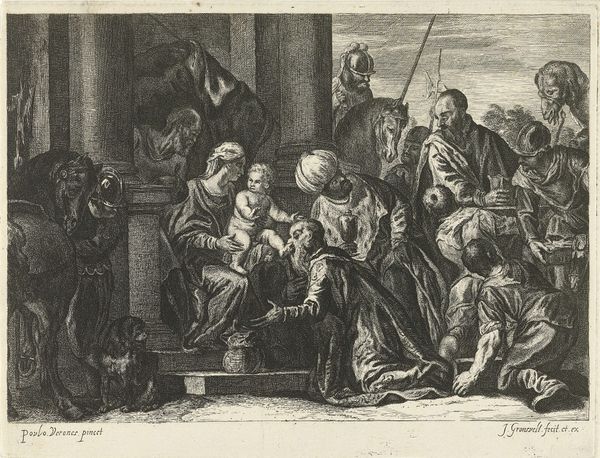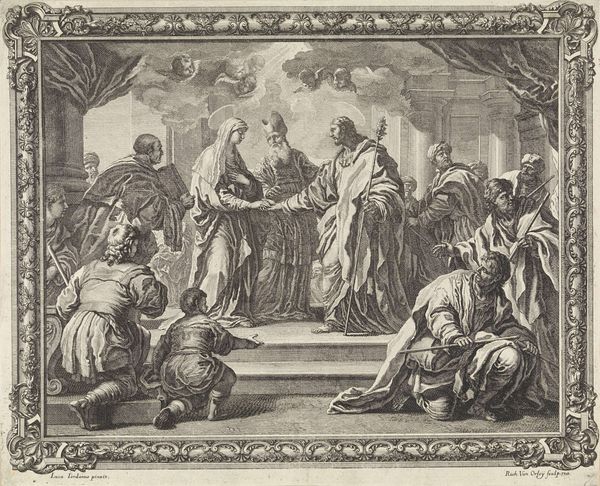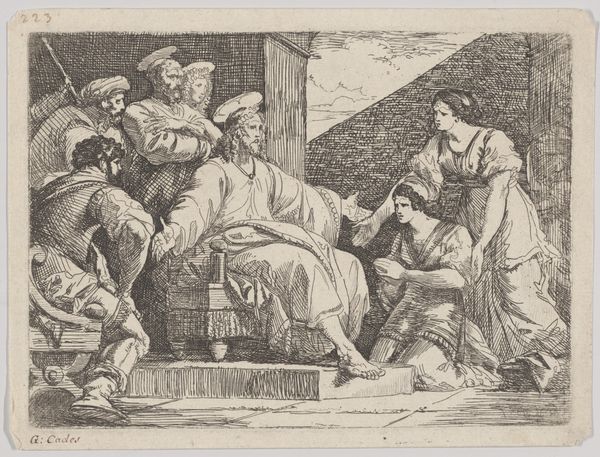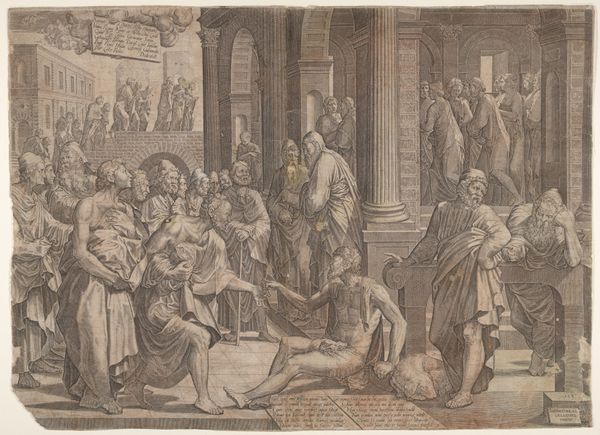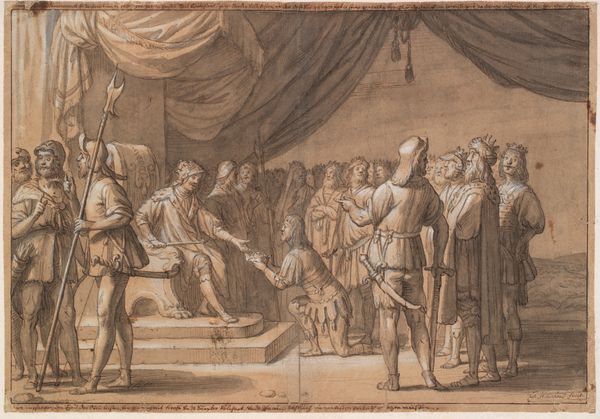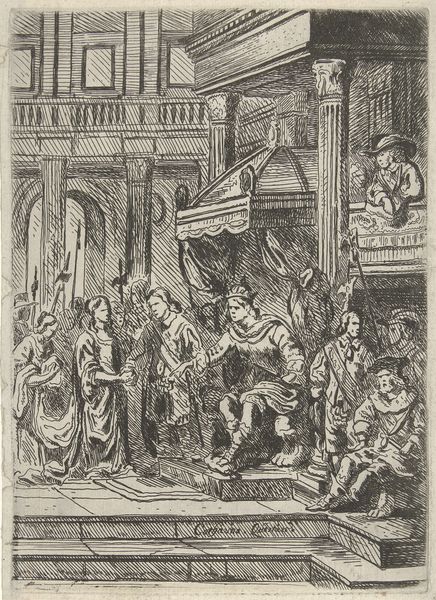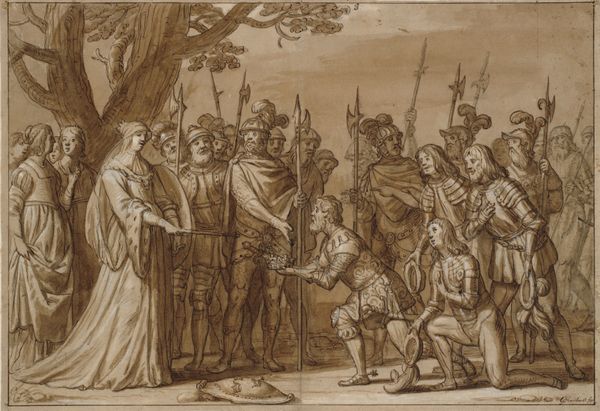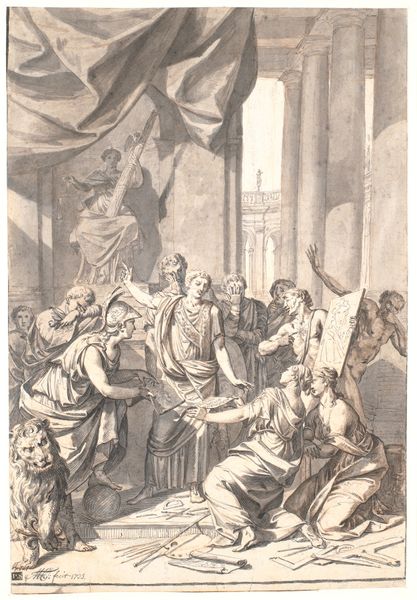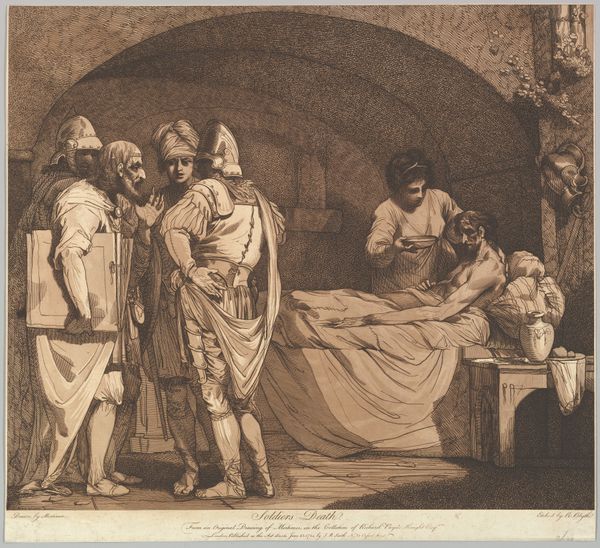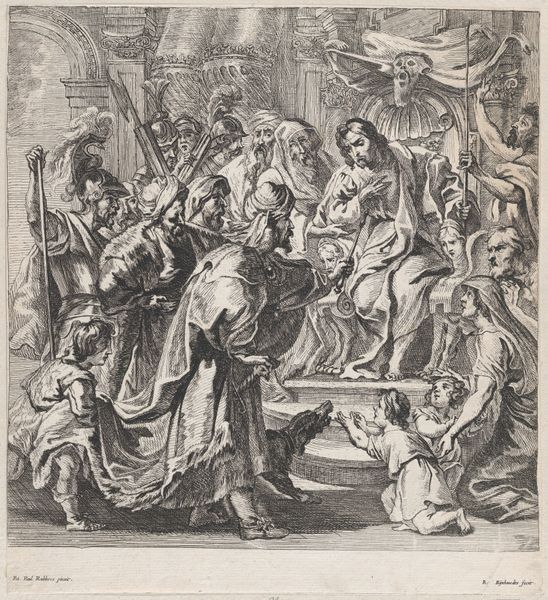
painting, oil-paint, oil, canvas
#
portrait
#
narrative-art
#
baroque
#
painting
#
oil-paint
#
oil
#
figuration
#
canvas
#
15_18th-century
#
history-painting
#
academic-art
Dimensions: 39.8 x 132.5 cm
Copyright: Public Domain
Curator: Oh, my, isn't that a lot of red? Like a cardinal convention. Editor: Indeed. Here we have Johann Andreas Herrlein’s “Aeneas Arriving in Latium,” painted around 1760. It’s oil on canvas, and currently residing at the Städel Museum. A dramatic scene, wouldn't you agree? Curator: Dramatic, yes, in that operatic, over-the-top way of the Baroque. All that swirling drapery—feels like a stage set, doesn’t it? You can almost smell the velvet and hear the trumpets. Editor: Absolutely. And if you think about canvas at the time, being laboriously hand-woven, stretched, primed – it was already a statement. This wasn’t just paint slapped on a cheap surface; Herrlein invested serious resources into just the support for his images, signalling value from the get-go. Curator: It's so consciously theatrical, though, isn't it? Look at the figures, all posed just so. I bet Herrlein directed them like a theatre director, shaping his vision for the scene's narrative. Are the viewers, ourselves, then transformed into part of the Roman audience, watching the historical actors engage in ritual, theater? Editor: A keen insight! It's history as spectacle. And consider the oil paints themselves. Imported pigments, ground and mixed – luxury goods transforming labor into art. And who supplied those pigments, where were they mined, what were the working conditions for the miners? Each color holds its own hidden stories, stories that complicate Herrlein's neat heroic narrative. Curator: I can’t help but wonder what the artist was truly thinking. The story is Aeneas. Does Aeneas see this as home? Is this home? The faces in this scene seem full of curiosity, intrigue and doubt. What an arrival for him! What would a “homecoming” like this have felt for the figures inside the image? The arrival can’t possibly mirror the expectation. Editor: These paintings acted as vital propaganda pieces during that era, which is easy to ignore with our historical distance, right? This heroic tableau, for an audience back then, reinforced social hierarchies and values as surely as the weaving mills in England supplied canvas and colored yarn. Curator: So much labor and luxury devoted to such theatricality! Still, I appreciate its ambition. A vast landscape to consider and imagine... Editor: And to unpack. Its impact resonated far beyond its completion. The materials used speak volumes to me.
Comments
stadelmuseum about 2 years ago
⋮
The elongated horizontal format suggests that both paintings originally decorated for the spaces above doors. Their subjects are taken from the Aeneid, which was written by the Roman poet Virgil as a “sequel” to Homer’s Iliad. Aeneas originally came from Troy. When the fate of that city was already sealed, he witnessed the murder of the aged king Priam. Fearing for the life of his own father, he saved him from the burning city. After a tortuous journey he was given a friendly welcome by King Latinus in Italy, where he became the progenitor of the Romans.
Join the conversation
Join millions of artists and users on Artera today and experience the ultimate creative platform.

